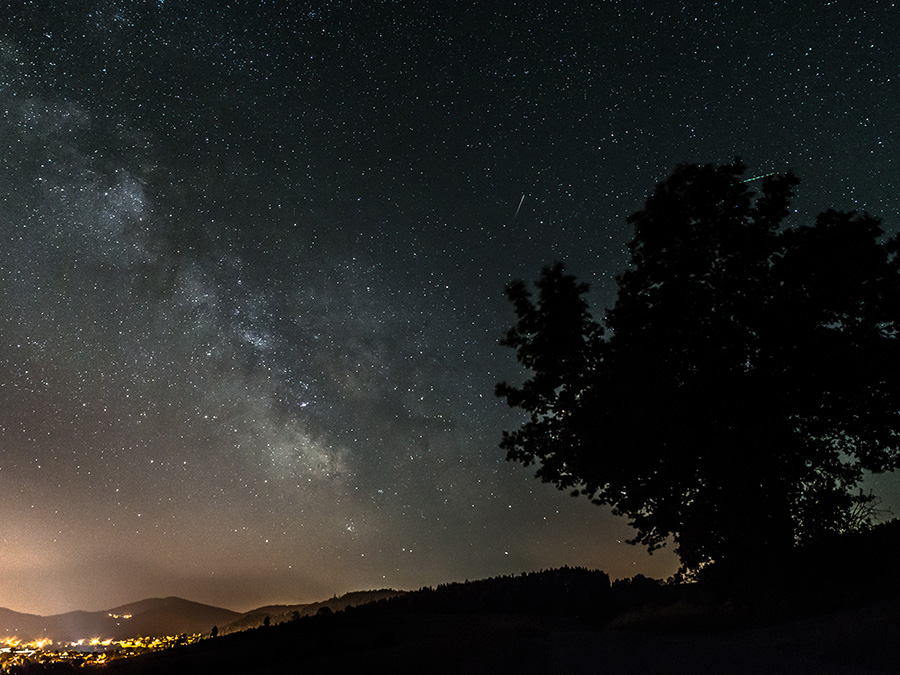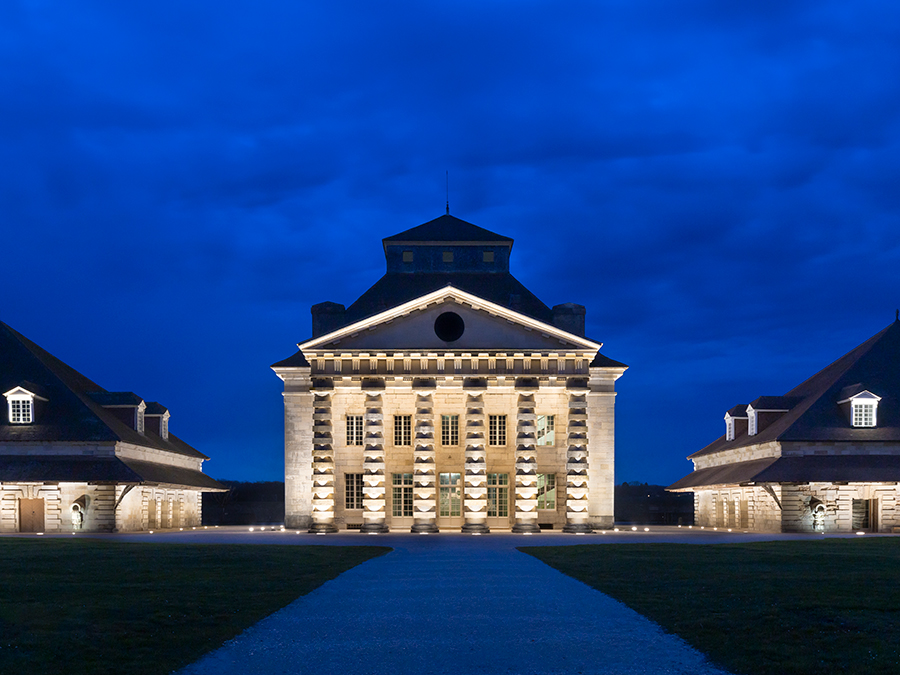On 16 February, to honour the “M’illumino di meno” (I illuminate (myself) with less) radio campaign, created by Rai Radio2 to celebrate the National Day of Energy Saving and Sustainable Lifestyles, we want to pause and reflect on the importance of responsible lighting. Artificial light has the power to enhance spaces, landscapes and architecture, but its misuse can alter the balance between light and dark, with adverse effects on ecosystems and the environment.
Responsible lighting is not limited to creating a pleasant, welcoming atmosphere but also ensures that nature and the night sky are respected. However, this approach requires a vision that goes beyond aesthetics to embrace technological solutions capable of combining design, functionality and energy efficiency.
Light, nature and the night sky
How often do we stop and look at the sky during our day?
In the past, looking up at the sky was an integral part of everyday life. The starry sky wasn’t just a sight to admire but an essential guide: through the stars and the sky, humans learnt to navigate, measure time and work in harmony with nature’s rhythms.
Today, however, the excessive artificial light in urban areas is compromising this precious heritage. Light pollution not only makes the sky less and less visible but also breaks the age-old bond between humankind and the universe. Protecting this relationship means rethinking the way we light up our world, and choosing solutions that respect the environment and restore the sky’s authentic appearance.
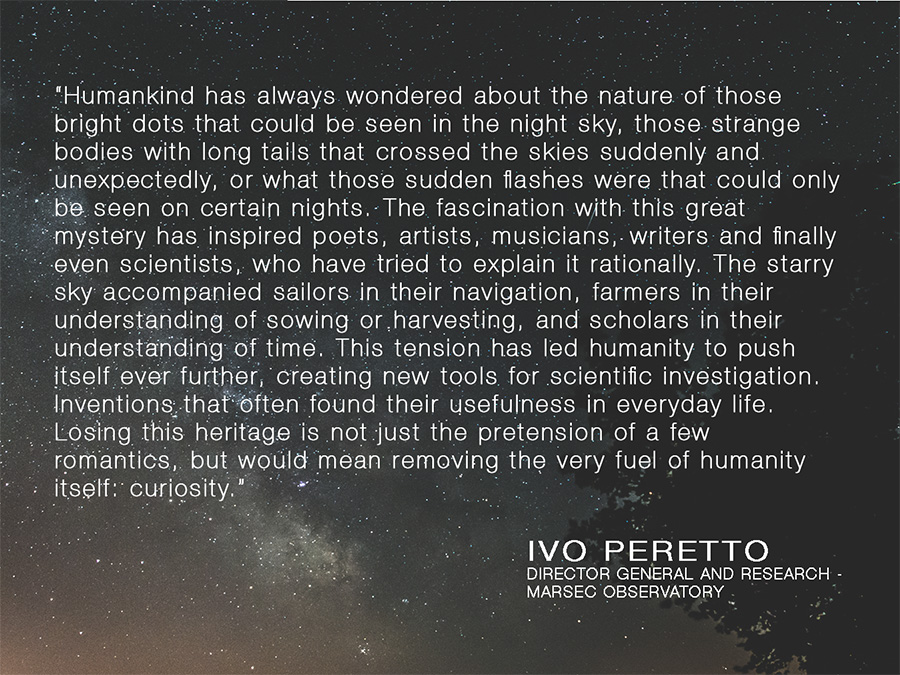
In addition to obscuring the starry sky, artificial light compromises the natural rhythms of all living beings. The alternation of day and night is fundamental for the correct functioning of plants, animals and micro-organisms’ biological cycles, known as circadian rhythms. These rhythms regulate the balance and wellbeing of entire ecosystems.
If used unthinkingly, artificial light can interfere with these delicate processes: it disorients nocturnal insects, modifies the habits of some animal species and hinders plant growth, altering photosynthesis. Insects, in particular, are attracted to blue light and can abandon their natural routes, thus compromising pollination and upsetting the balance of the food chain.
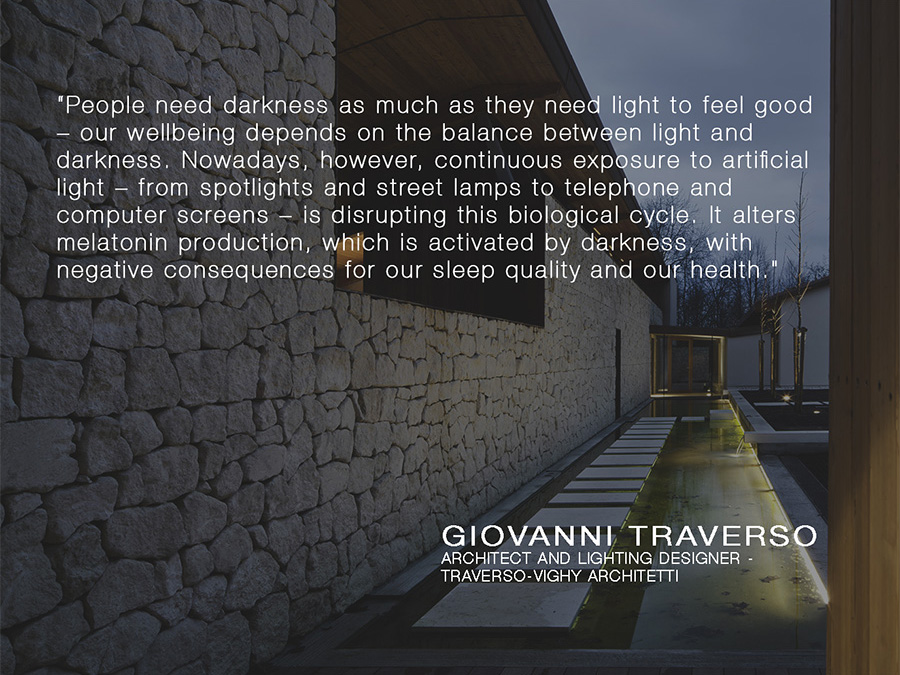
But what can we do to reduce the impact of artificial lighting on nature and the starry sky?
Directing the light with precision
Responsible lighting starts with controlling light spill and intensity. Directing light only where it is needed, with just the right level of illumination for the visual task in hand, allows us to reduce its environmental impact and optimize energy efficiency.
Using lighting fixtures with a wide range of optics and symmetrical and asymmetrical snoots enables the luminous flux to be accurately focused, directing it only onto the surfaces to be illuminated, thus preventing waste and light spill. What’s more, advanced tools such as the Light Shaper allow you to shape the light output with extreme precision, adapting it to the design requirements and creating illumination that is both functional and environmentally friendly.
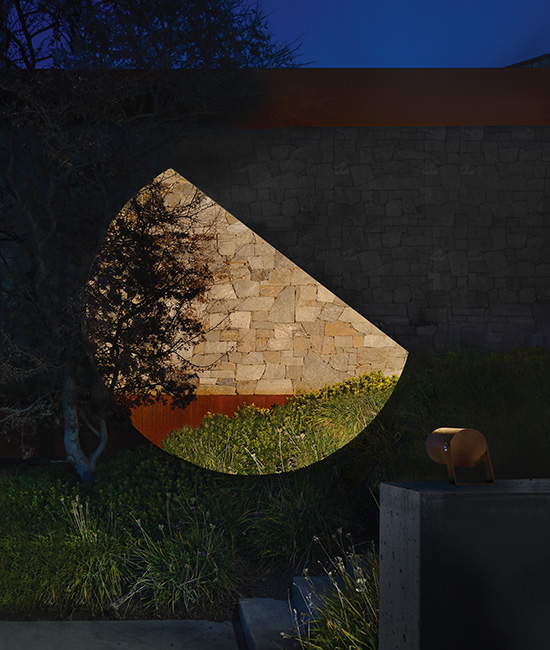
To dig deeper into the topic, we asked lighting designer Lorella Marconi to tell us how precise, responsible lighting makes a difference in her projects.
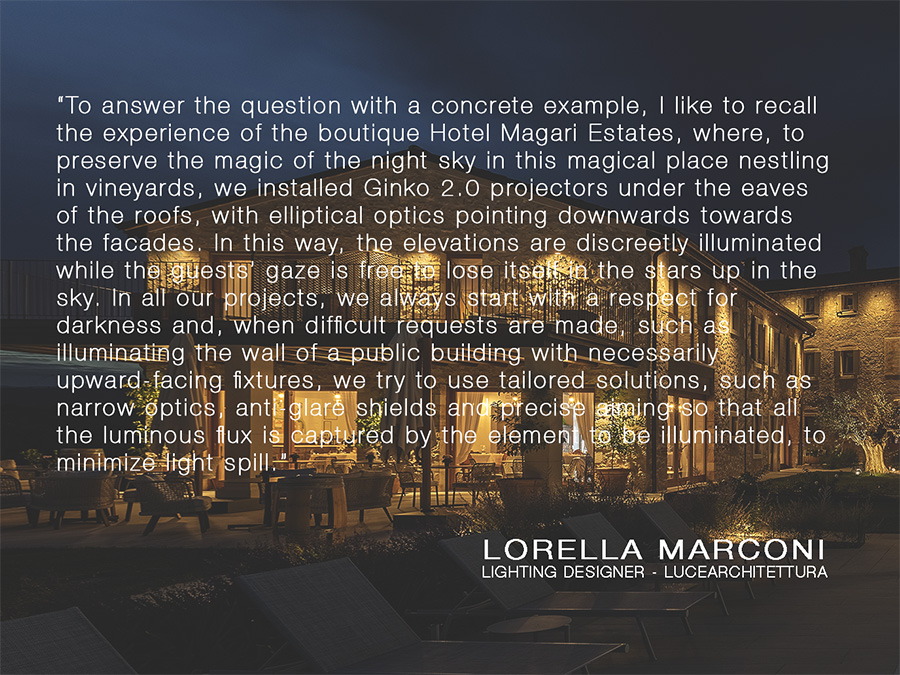
Choosing the colour temperature
The colour temperature of the light affects not only the aesthetics of the space but also the environmental balance of the surroundings. Light sources with a cool colour temperature have a higher blue light component. This can alter the biological rhythms of the local ecosystem, interfere with the circadian cycles of plants and animals, and disorientate insects.
For outdoor lighting, particularly in natural or landscaped areas, it is preferable to choose colour temperatures below 3000K. Warm tones reduce the effect on circadian rhythms and create a harmonious, welcoming atmosphere, evoking the colours of the sunset or the glow of a candle.
Pedro Telhado, lighting designer at Light2Life, tells us how this choice was applied to the Fortaleza de Juromenha project, located in the Dark Sky Alqueva Reserve.
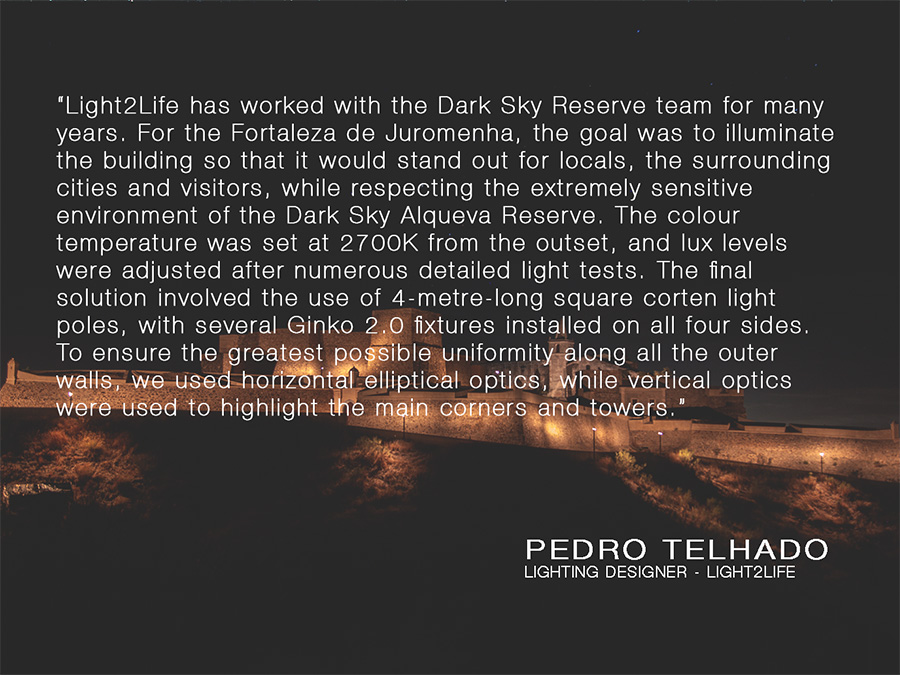
Control systems for intelligent lighting
Lighting control systems are a further step towards more conscious and sustainable lighting choices. Modern technology allows us to adjust brightness dynamically, adapting it to our schedules, environmental conditions and available natural light. This not only optimizes energy consumption but also guarantees lighting that always matches the real needs of the moment.
Functions such as virtual midnight automatically reduce light intensity during the night, optimizing consumption and preserving the balance between light and darkness. By integrating sensors and advanced management systems, we can avoid over-illumination and ensure that light is distributed in a precise and context-sensitive manner.
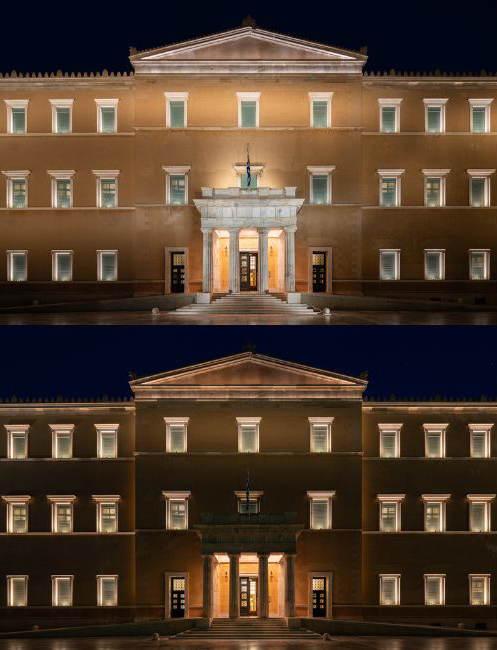
About the Hellenic Parliament project, winner of the Heritage Lighting Design at the LIT Design Awards, Thanos Danilof, architectural lighting designer and consultant at DANILOF light + perception studio, says:
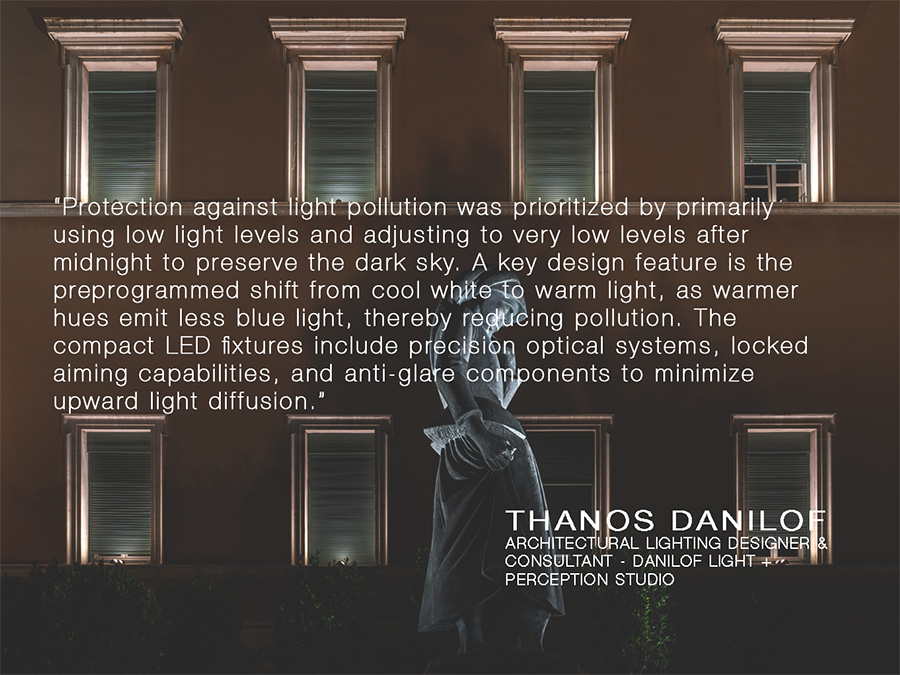
Fixtures that disappear into the landscape
Finally, a conscious, responsible use of light requires the lighting fixtures to integrate harmoniously into the landscape without overpowering it. The best way to achieve a natural, unobtrusive effect is to choose lighting fixtures that blend into their surroundings thanks to green or natural-colour finishes that harmonize with the landscape, or the use of shadow-effect filters that simulate sunlight glinting through the plants.
Using accessories, such as the tree belt, to position the fixtures directly on trees and bushes allows light to be distributed in a targeted way, perfectly integrating the devices into the natural environment, minimizing their visual impact and respecting the morphology of the landscape.
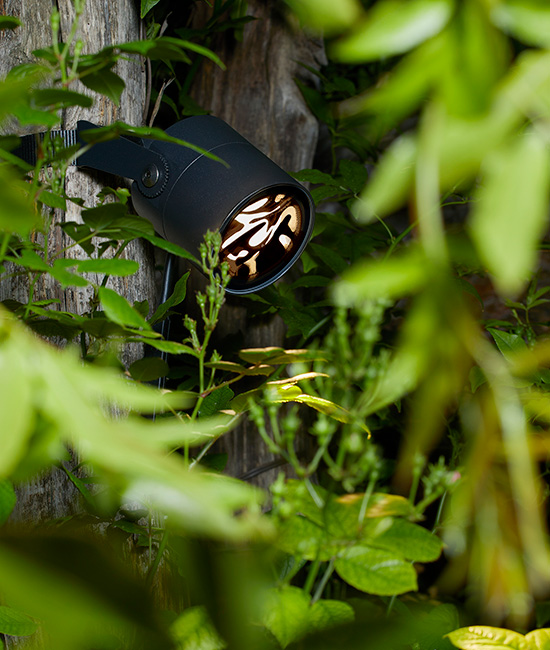
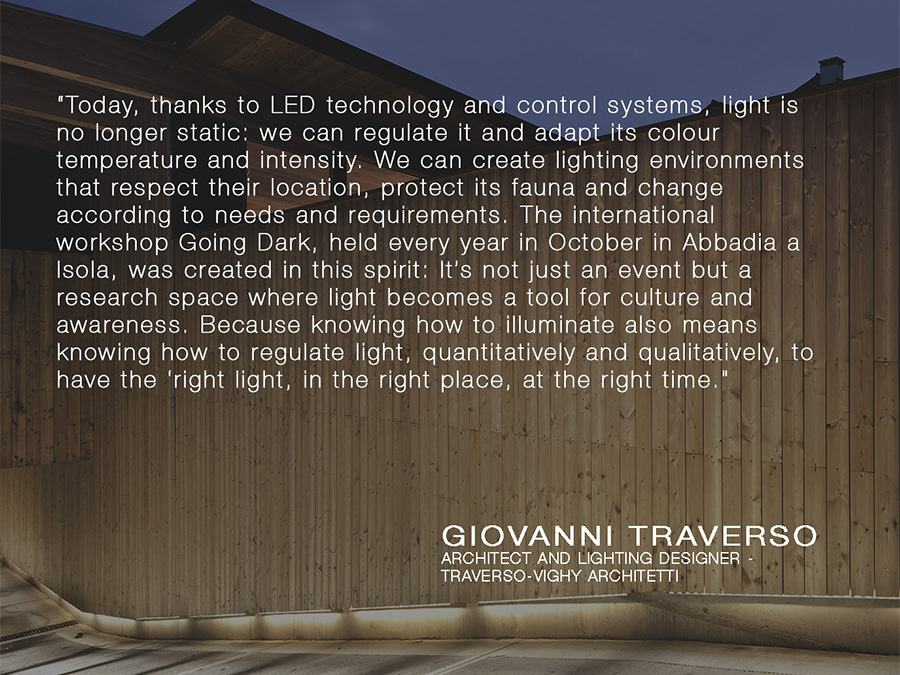
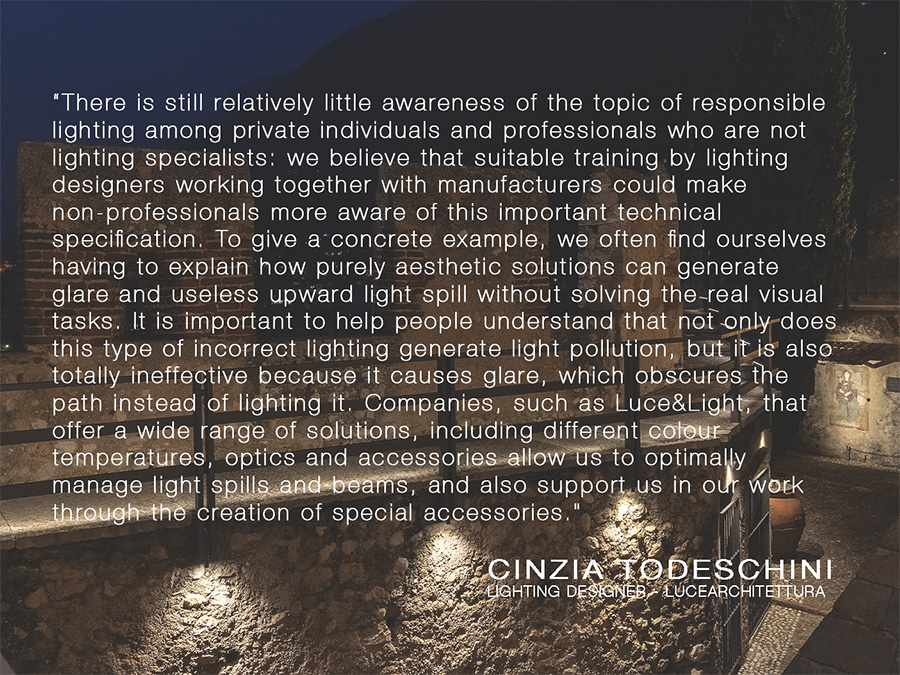
The “M’illumino di meno” campaign invites us to reflect on how every design choice can make a difference to the environment and the night sky. Conscious designing means not only protecting the ecosystem but also improving quality of life and ensuring safety. Creating a balance between light and darkness is essential to promote sustainability and preserve natural beauty, and has a positive impact on all aspects of our world.

